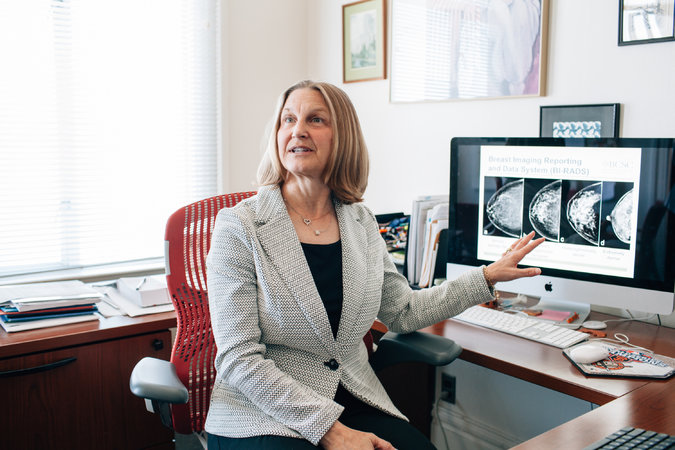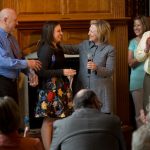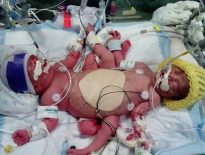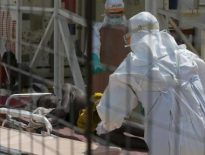A new study offers help to patients and doctors who are trying to deal with mammogram results that many women consider troubling and confusing: the finding of dense breast tissue.

Not only is breast density linked to an increased risk of cancer, it also makes cancer harder to detect because dense tissue can hide tumors from X-rays. But the new research indicates that not all women with dense breasts are at very high risk.
Patient advocates urge women with dense breasts to ask doctors about extra tests like ultrasound or an M.R.I. to check for tumors that mammography might have missed. Studies have found that those exams can improve detection of tumors over mammography alone in dense breasts.
Pressed by advocacy groups, 22 states have passed laws requiring that breast density be reported to mammography patients, and similar federal legislation has been introduced in the House and the Senate.
The new study, published on Monday in Annals of Internal Medicine, suggests that only about half of women with dense tissue are at such a high risk that they need extra tests. Instead of looking at density alone, women and their doctors should also consider other risk factors when making decisions about additional screening, the researchers concluded.
While mammography is currently the best screening tool we have, there are women for whom mammography is not enough, said Dr. Constance Lehman, an author of the study and the director of breast imaging at the University of Washington in Seattle.
We hope this work can help women be better informed regarding whether or not supplemental screening, such as with ultrasound or with M.R.I., should be considered, she said.
The study, by a large team of experts in breast cancer and epidemiology, was done in part because many doctors thought that the laws and advocacy groups had gotten ahead of the science. About 45 percent of all women have dense breasts, but not every woman with that finding has a high risk of cancer.
Some experts warned that the new laws would give some women bad news that did not necessarily apply to them and lead to a demand for unnecessary, expensive tests that could swamp the health care system.
I was trying to focus in on who’s really at high risk of having their breast cancer not seen on mammography, said Dr. Karla Kerlikowske, the first author of the study and a professor of medicine and epidemiology and biostatistics at the University of California, San Francisco. It can’t be 45 percent of people.
Dense breasts have a relatively high proportion of glandular or connective tissue, which shows up as white on mammograms. Tumors also appear white, so dense tissue can hide them. Non-dense breasts have more fat, which looks dark on mammograms, so tumors stand out more easily.
Density can be detected only by mammograms and is reported in one of four categories, from almost entirely fatty to extremely dense.
The study findings are based on the medical records of 365,426 women ages 40 to 74 who had screening mammograms from 2002 through 2011. The researchers wanted to know if they could detect whether, among all the women with dense breasts, any distinct subgroups had a higher risk than others of developing an interval cancer, meaning one that is found less than a year after a normal mammogram.
Such tumors, usually found when a patient or her doctors feel a lump, may have been present but not detected by the mammogram.
The report uses breast density assessments along with an online calculator that estimates a woman’s risk of developing breast cancer in the next five years. The calculator asks five questions: a woman’s age, her race, breast density as reported from mammograms, whether she has ever needed a breast biopsy and whether her mother, sisters or daughters have ever had breast cancer.
The calculator categorizes each woman’s risk as low, average, intermediate, high or very high. A five-year risk up to 1.66 percent is considered low to average; more than 4 percent is very high.
The study found that women with certain combinations of breast density and five-year risk levels had the highest odds of an interval cancer. Two groups had high rates of interval cancer, defined as more than one case per 1,000 mammograms.
One group included women with a five-year risk of 1.67 percent or higher and extremely dense breasts. The second group had a five-year risk of 2.5 percent or higher and heterogeneously dense findings on mammography.
Women with a five-year risk of 2.5 percent or higher and heterogeneously or extremely dense breasts — 21 percent of all women with dense breasts — were also the most likely to have interval cancers that were advanced, the study found.
These women with the highest risk are the most likely to benefit from additional tests after a normal mammogram, the authors said.
An accompanying editorial said the study provided compelling evidence that density alone should not be the basis for deciding whether to have additional screening.
The study authors provided an example of one way the information might be used for a sample of 100,000 women with dense breasts in mammograms. If they all had additional tests, about 89 interval cancers would be found. One cancer would have been discovered for every 1,124 tests administered.
But if the extra testing were limited to only the two groups of high-risk women singled out in the study, 24,294 women from the sample would have the tests, and about 35 interval cancers would be found. So it would have taken 694 tests to diagnose one cancer.
Noting that this limited approach would likely miss more than 50 cancers, Dr. Kerlikowske said: You can imagine, someone may not like that strategy. You’re only targeting higher-risk women. My argument to that is the people in the high-risk, high-density group are at high risk of advanced cancer, so you’re more likely to benefit those women.
An expert not part of the study, Dr. Carol Lee, a diagnostic radiologist at Memorial Sloan Kettering Cancer Center in New York, said, I think this paper gives some very good information. But I don’t think it answers the question.
Deciding what the cutoff should be — how great an increased risk justifies additional testing — is a value judgment, Dr. Lee said.
She questioned the strategy that would leave more than 50 cancers undetected, and did not consider it unreasonable to test 1,124 women to find one cancer.
But she added: We have to decide, what is our goal? To pick up every possible breast cancer as soon as we possibly can? It’s a wonderful goal in theory, but I don’t know that it’s a realistic goal.





